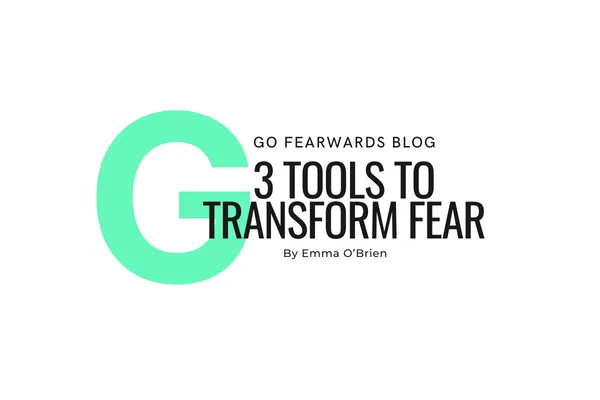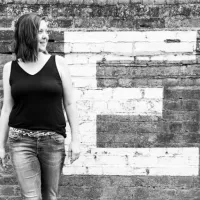

3 Tools To Transform Fear
Go Fearwards Friday: 1 December
Hello there!
It's issue #27 of Go Fearwards Friday, where I share ideas and insights each week to encourage, inspire and equip you to embrace fear and fuel your potential.
This week at a glance:
Read time: 3 minutes
At its basic level fear’s purpose is to help us react and prepare us to respond. Its purpose is not to try to screw up our life and stop us progressing our goals. That’s just an unfortunate and uncomfortable side effect sometimes!
So if we want what lies beyond the stuff that scares us, it’s down to us to elevate ourselves beyond our primitive responses. The great news is we absolutely can!
In this issue we’re transforming performance fear into positive energy and excitement you can use to give it your best (and enjoy it!).
There’s a reason you feel fear!
I think we all know this but it’s worth a reminder: there’s a reason our hearts race and adrenaline spikes. The fear reaction begins in the brain when the amygdala detects a perceived threat and it reverberates throughout the body in order to make the necessary adjustments to prepare the best defence or flight reaction.
Fear responses are important. They can include reflex actions, for example if you step on something sharp you would pull up the foot and extend the other leg without thinking. It also extends to other systems in the body. These include release of stress hormones, triggering of the sympathetic nervous system, the brain becoming hyper alert, pupils dilating, breathing accelerating, heart rate and blood pressure increasing. Blood flow increases and energy in the form of glucose is sent to the muscles. The response also shuts or slows down other systems like our calming, parasympathetic system and gastrointestinal system. Pretty amazing really and it's no wonder that in times of fear we can't think straight, go blank, fluff our words and what to hide or run away.
It’s also commonly talked about that some of the main chemicals that contribute to the fight or flight response are also involved in other positive emotional states such as happiness and excitement. But how do we use that knowledge to actually help us out when we need it?
What makes the difference between getting a ‘rush’ and feeling terrified?
Studies suggest that a major factor in what makes the difference is context.
Our conscious thinking brain has the opportunity to give feedback to our unconscious emotional brain about the perceived threat. I.e. is it something to be really terrified of or not? This is important, it’s our 'way in' and an opportunity to take control when fear strikes.
If, when you feel fear, you intervene and do something to change your perception to being in a safe space then you can quickly shift the way you experience that high arousal state and go from fear to excitement or enjoyment pretty quickly.
And you can also get better at this process of intervening with practice.
The key is to
1. Remember that you can intervene, you do have a say in what happens next and
2. Have a quick, reliable and effective routine to go to.
Three 'Go To' tools to transform fear
These are my personal favourite ‘go to’ tools. They work because they help shape a context that rapidly downgrades the fear response to prevent it from becoming overwhelming and enable you to switch up your energy to help you perform at your best instead.
This is the exact approach I implemented to help me overcome fears around public speaking. The very first time I delivered a hypnotherapy demonstration to 120 students I had this surprising and almost overwhelming impulse to be sick and run away. I didn’t even think I was that nervous until almost the moment I was about to do it. Now I’ve perfected my routine, not to the point where I don’t feel any nerves at all, but to notice the signs when my mind begins to go there and step in with these tools instead. I can honestly say I do feel excited and ready to perform at my best whenever I do these three things:
It begins with the build up.
You begin setting the context way before an event with the meaning you attach to it, the thoughts you are having about it and the mental images in your mind. On the lead up you might well feel nervous but it's best to avoid actually saying that out loud and thinking to yourself that you’re petrified! Your mind is paying attention to all of this.
It’s worth engaging in some mental preparation because it will make it so much easier to intervene in moments fear strikes. So even if you do feel apprehensive, nervous or even terrified, practice saying more helpful things like "I’m excited to do this", "this is good for me", "the thing I’m most looking forward to is…" "doing this means I get to [something positive]". It might help to list some ideas so you can feed them back to yourself more easily. It's the same for the mental images you make, in moments where you do feel calm could you feed your mind images of positive outcomes and visualise it all going well for you?
Focus on your body and your breath.
L O W…. S L O W…. breaths, not forced breaths or holding the breath, just low, slow rhythmical breaths of an even count in and out, through your nose. If you can slow your breath to 5 or ideally 6 counts in and 6 counts out it will enhance focus, regulate your heart and if you can allow the breath to flow down into your belly so that it gently rises and falls, you’ll stimulate the calming areas at the bottom of your lungs. If you make this a more frequent or even daily practice your body and mind will respond quicker.
"The hand rub!"
I shared this quick tip on Instagram during the week and it’s going down a storm because it really does work. Put your hands together, palms facing each other and point them downwards towards the floor. Now rub your palms together and feel the heat between them, and as you rub them together, lift your hands up so you are now rubbing them together in front of your chest. Say something positive, or encouraging to yourself as you do this, "I'm excited" works well.
This movement is great for taking control of fear and physically transforming it into excitement and positive anticipation. As you’ll see, even though I’m about to give my talk I can’t help but smile and feel good when I do this!! Watch the Instagram reel
Imagine if you practiced this routine and made it your own? Having this as an automatic response anytime you feel a little fearful?
Try it out, let me know how it goes and I'm here on the other end of an email or Instagram DM to help you iron out any kinks and answer your questions.
P.S. Reading this on the blog? Subscribe here
Get Go Fearwards Friday Straight to Your Inbox
Receive the weekly newsletter where I provide actionable systems to help you embrace fear and fuel your potential.
